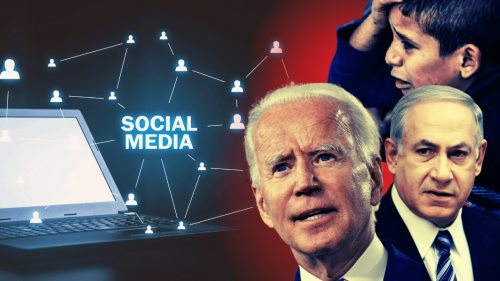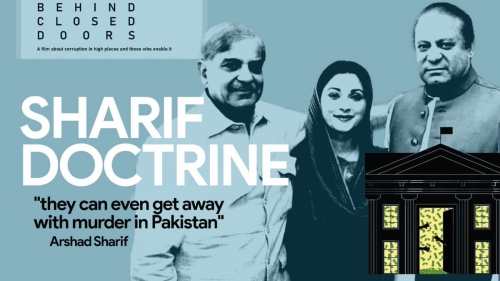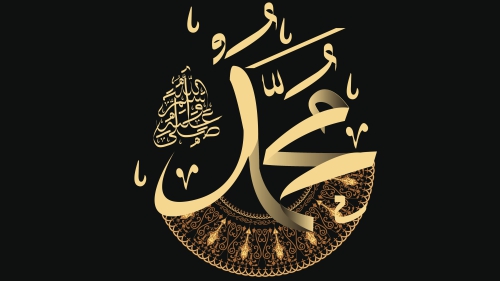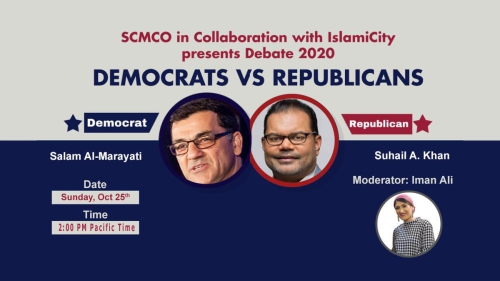It's time for Indian Muslim leadership to look in the mirror
During his short tenure in office, former Indian prime minister, Deve Gowda, made a very courageous statement. He openly admitted that the Muslim minority in India had been neglected and ignored by the government ever since independence in 1947. Gowda also expressed regret for the plight of Indian Muslims.
Sure, government neglect is one of the reasons for the unenviable situation of Indian Muslims, but it's not the only explanation. Perhaps the most popular reason, given for the plight of Indian Muslims, is the rise of Hindu nationalism represented by its most visible face, the Bharatiya Janata Party (BJP).
Certainly the Sangh Parivar - which also includes the more radical Bajrang Dal, Shiv Sena, Vishwa Hindu Parishad (VHP) and Rashtriya Swayamsevak Sangh (RSS) -- is not helping the situation. The movement's well-oiled propaganda machinery, which includes publications and broadcast media, is clearly achieving results. For example, a pamphlet distributed in remote districts throughout North India reads as follows: "The Hindu samaj needs to resort to social opposition and if necessary by violence attacks(sic) to find a solution to this [Muslim boys marrying Hindu girls]".
In the case of Halvad village, a Muslim boy abducted a Brahmin girl. On the day of the court verdict, the Miyo (Muslim) was bold enough to move around the village with the Brahmin girl. That day, more than a thousand people turned out, armed with pipes and iron rods which they used to beat the couple to death. Their bodies were left on the courtroom floor. The incident is etched in golden letters in the proud history of Hindu Samaj: "Revenge of this type is necessary against such abduction of our girls."
The surprising thing about this is not that such material is distributed in India, but the fact that there is a deafening silence coming from the BJP led government in New Delhi.
But again, to blame the situation of Muslims on the rise of Hindu nationalism is also a non-starter. As M. P. Yashwant Kumar, a noted commentator and editor-in-chief of the Bangalore-based Meantime Newsmagazine, recently wrote in one of his columns, "The problem of the Muslim community did not begin with the BJP coming to power and they are not likely to go away if the BJP fades away."
In fact, Muslims were no better off during the reign of the "secular" Congress party. During their rule of 45 years, the lot of Muslims also deteriorated. This is not to deny that some individual Muslims did get ahead thanks to their Congress connections. The party continues to shamelessly exploit the community. Indeed, the recent controversy over the arrest of Shiv Sena leader Bal Thackeray is seen by some commentators as another cheap attempt by the Congress to win Muslim votes.
Needless to say, it's not only the Congress party that is guilty of using Muslims. All parties have exploited the community from time to time as a vote bank.
Much of the blame for the deplorable state of Muslims rests squarely on the shoulders of the leadership itself, which has allowed the community to be used time and time again. The lack of vision in the leadership is mind numbing. The Shahi Imam of Delhi's Jama Masjid, Syed Abdullah Bukhari's recent call for a another separate Muslim political party is illustrative of the leaderships' focus on poorly thought out initiatives. How will a community of 12% to 15% ever gain any real power if they alienate themselves? How can one speak out against the BJP for being a religious party and in the same breath call for a Muslim only party?
To this day, much of the leadership act impulsively and spend much of their thinking wrangling over religious minutia. Khutbas are still only in Arabic, which in many cases not even the khateebs understand, as they appear to be merely parroting from memory. Women are not allowed to step foot in most mosques.
The emphasis on mosque and madrasa building to the exclusion of everything else, the increasing ghettoization and the alienation of women and youth is very apparent. One is hard pressed not to find a mosque every few hundred meters in Muslim majority areas.
Unfortunately, the attendance at regular prayers is diminished, to say the least. In fact, in one mosque I visited with my cousins the other namazis (worshipers) were staring at us because we stood out as the youngest people among the 50-plusers. One of them even came up to me to ask me where I was from.
Much of the leadership is oblivious to the rapid westernization transforming their society and reducing their flock. Sadly, as the leadership squabbles and expends much of its energy on non-issues and fighting tooth and nail over the right to preserve "instantaneous triple talak", its youth and educated women are rushing out the back door. Knowledge and practice of Islam among the masses is kept to a minimum of rituals and cultural norms.
Since my last visit eight years ago, I expected to see some change. And sure there are some. A few dedicated and visionary individuals have initiated significant projects in relief and development, education, media, religious propagation, health and industry. But these are few and far between and many of these are struggling to stay afloat.
It was heartening to see that there were a few mosques that understood the need to have the Khutba in the local language and the importance to welcome women to the masjid. The greater level of Islamic spirit and commitment in these areas are clearly noticeable. But unfortunately, the biggest change I witnessed was in the shameless preoccupation of many with conspicuous consumption.
They have taken to heart Indian Electronics giant ONEIDA's promotional slogan "neighbours envy, owners pride." The millions of Indians - mostly Muslims - who have made fortunes working in the Middle East have spent most of it on building bigger homes (more aptly palaces), acquiring property and other luxury items.
Unfortunately, very little has gone to build and finance industry, quality educational institutions and other infrastructure vital to uplifting the community. There is much to be learned from the Christian community's successes in the fields of education, industry and health care.
If anything, in some areas of southern Indian (where Muslims are generally better off) the flow of "petrol dollars" has helped to polarise the communities even more. There is not only tension between the haves and the have-nots within the Muslim community, but there is an increasing resentment from the Hindu community.
New, visionary and progressive leadership must take hold of the reigns and direct the community's energy toward educational and social upliftment and the inclusion of women as equal partners in the mosque as well as in community building. It's also high time for men to realise that women are an important aspect of any attempt at building a strong community, as they are the mothers and teachers moulding the future generation.
The Muslim leadership should look in the mirror to see who is to blame before pointing fingers at others.
(Faisal Kutty is a Toronto-based lawyer and writer. He is also a columnist for the Washington Report on Middle East Affairs. This article was written shortly after his return from a visit to India. This column is one in a series he plans to write on observations and research during his trip.)

















